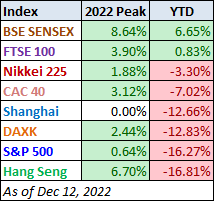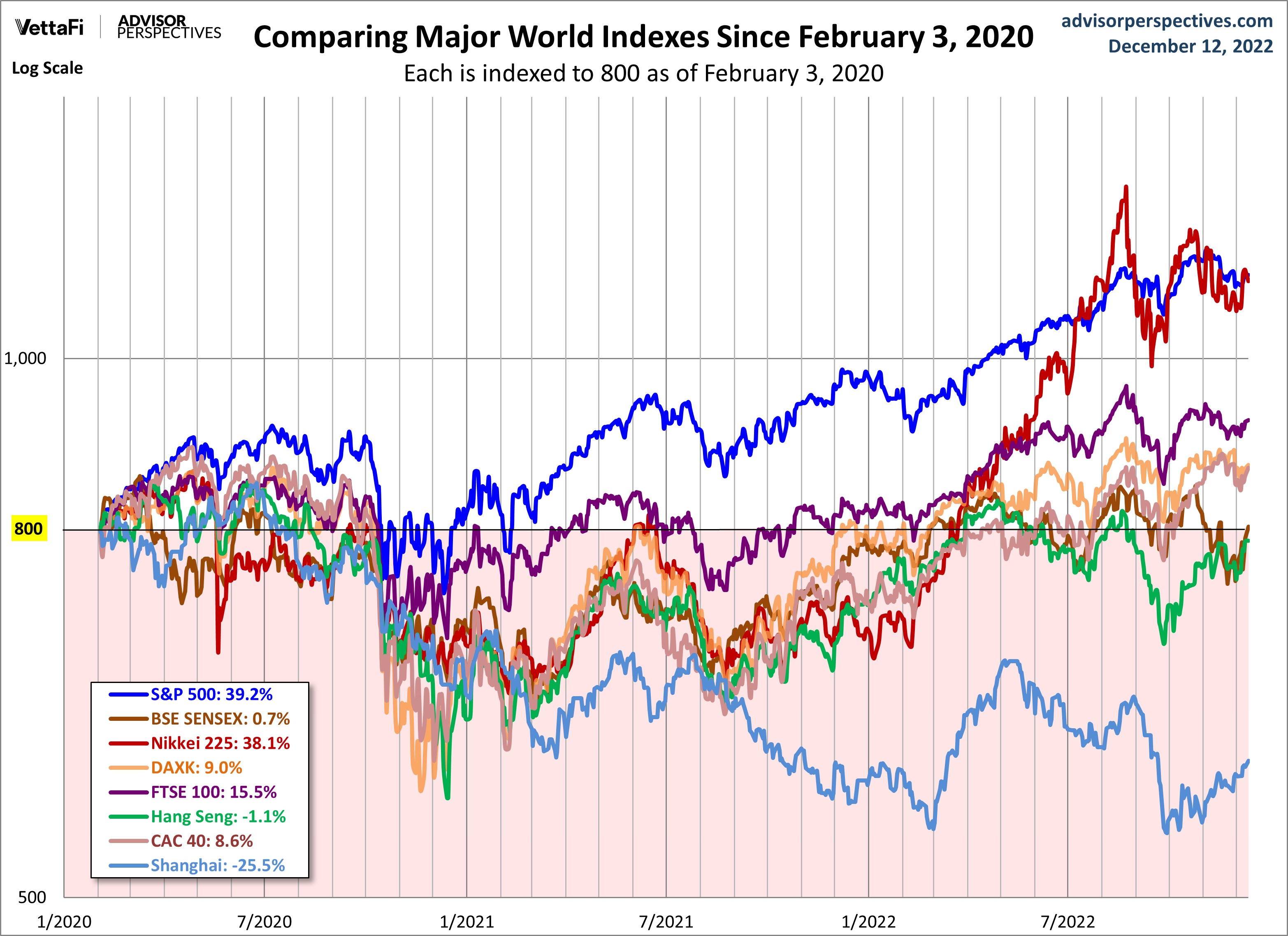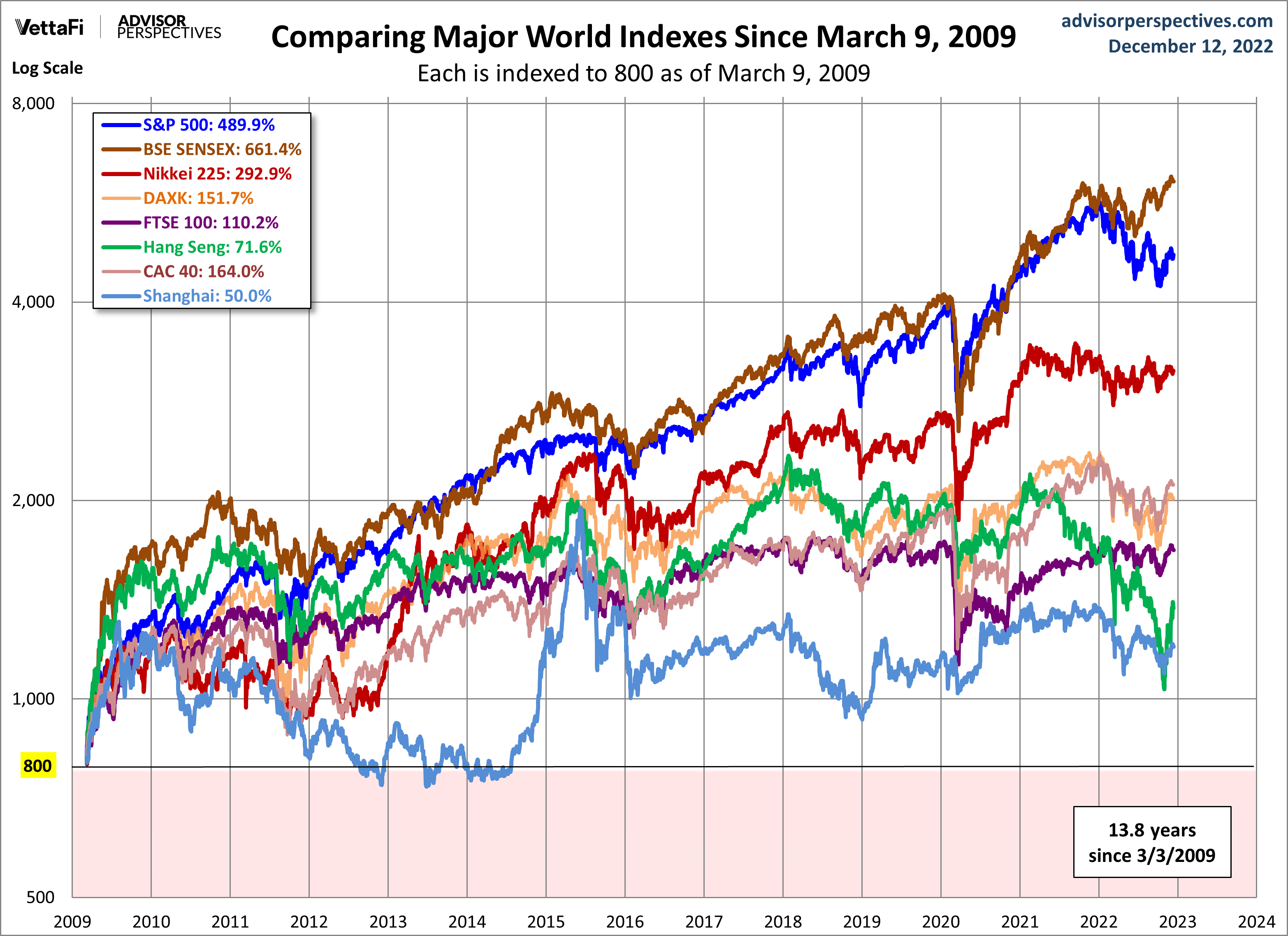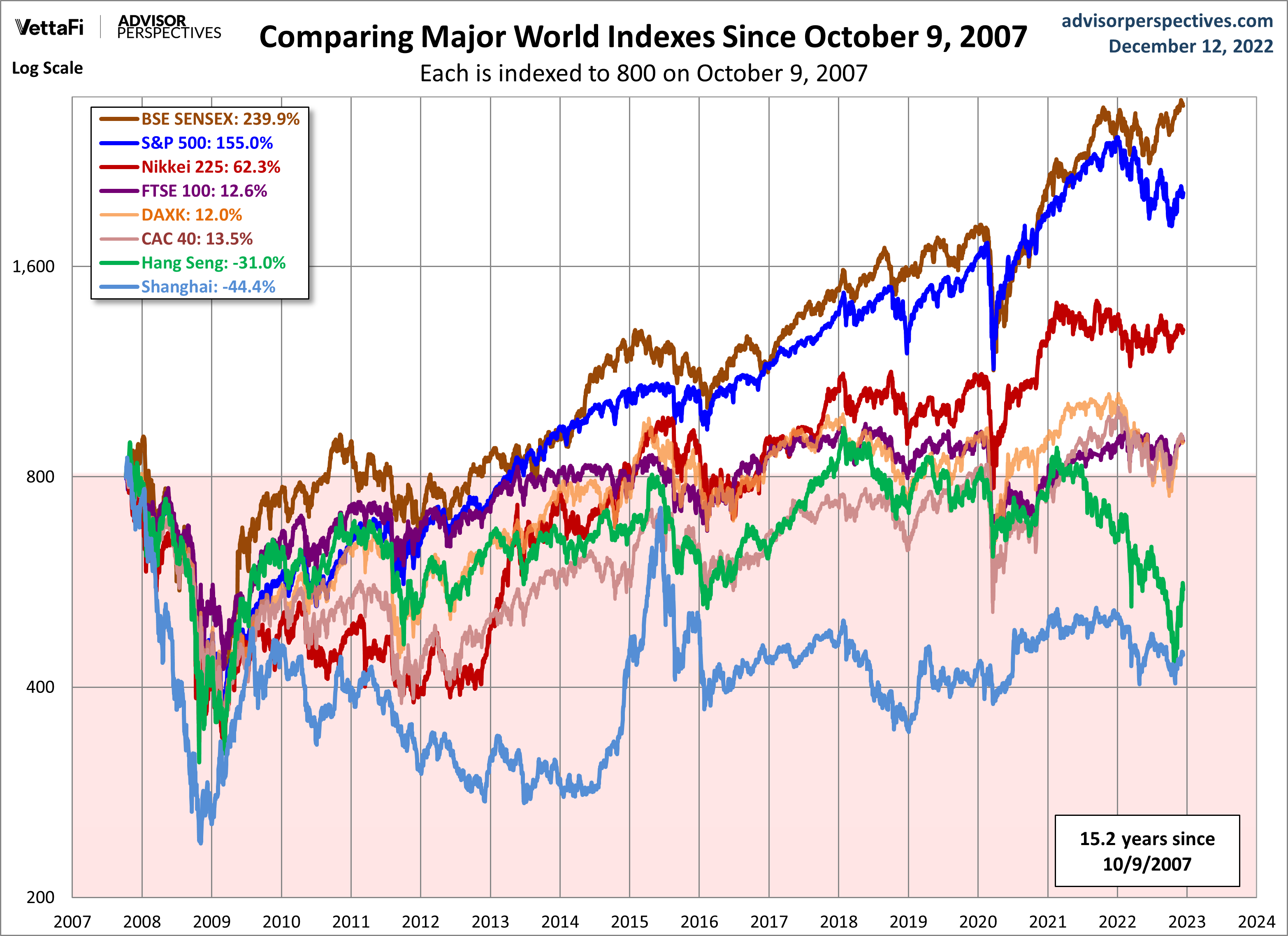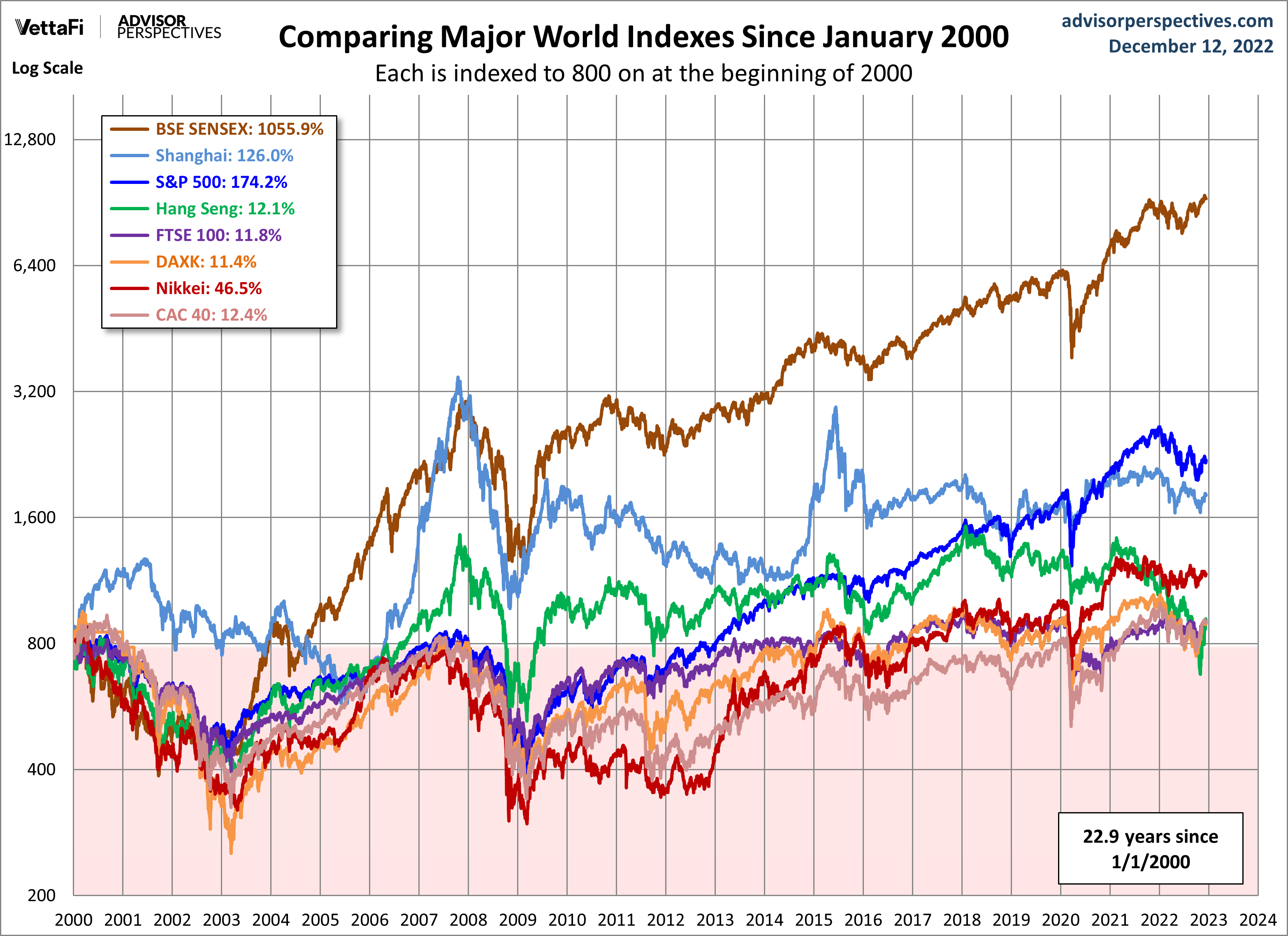World Markets Update - Monday, Dec. 12
Six of eight indexes on our world watch list posted losses through December 12, 2022. The top performer is India's BSE SENSEX with a YTD gain of 6.65%. London's FTSE 100 is in second with a gain of 0.83%, and Tokyo's Nikkei 225 is in third with a loss of 3.30%. Coming in last is Hong Kong's Hang Seng with a loss of 16.81% YTD.
Here are all eight world indexes in 2022 and the associated table sorted by YTD.
World Indexes and Recent Recessions
Let's start with a very recent chart with the latest recession. We've used February 3, 2020 for our start date (this is the official NBER recession start).
The chart below illustrates the comparative performance of World Markets since March 9, 2009. The start date is arbitrary: The S&P 500, CAC 40 and BSE SENSEX hit their lows on March 9th, the Nikkei 225 on March 10th, the DAXK on March 6th, the FTSE on March 3rd, the Shanghai Composite on November 4, 2008, and the Hang Seng even earlier on October 27, 2008. However, by aligning on the same day and using a log scale vertical axis, we get an excellent visualization of the relative performance. We've indexed each of the eight to 800 on the March 9th start date. The callout in the upper left corner shows the percent change from the start date to the latest weekly close.
Here is the same visualization, this time starting on October 9, 2007, the closing high for the S&P 500, a date that is approximately the mid-point of the range of market peaks, which started on June 1st for the CAC 40 and ended on January 8, 2008 for the SENSEX.
For a longer look at the relative performance, our final chart starts at the turn of the century, again indexing each at 800 for the start date.
More By This Author:
U.S. Workforce: November 2022 UpdateThe Civilian Labor Force, Unemployment Claims And The Business Cycle - Monday, Dec. 12
Multiple Jobholders Are 4.9% Of All Employed


